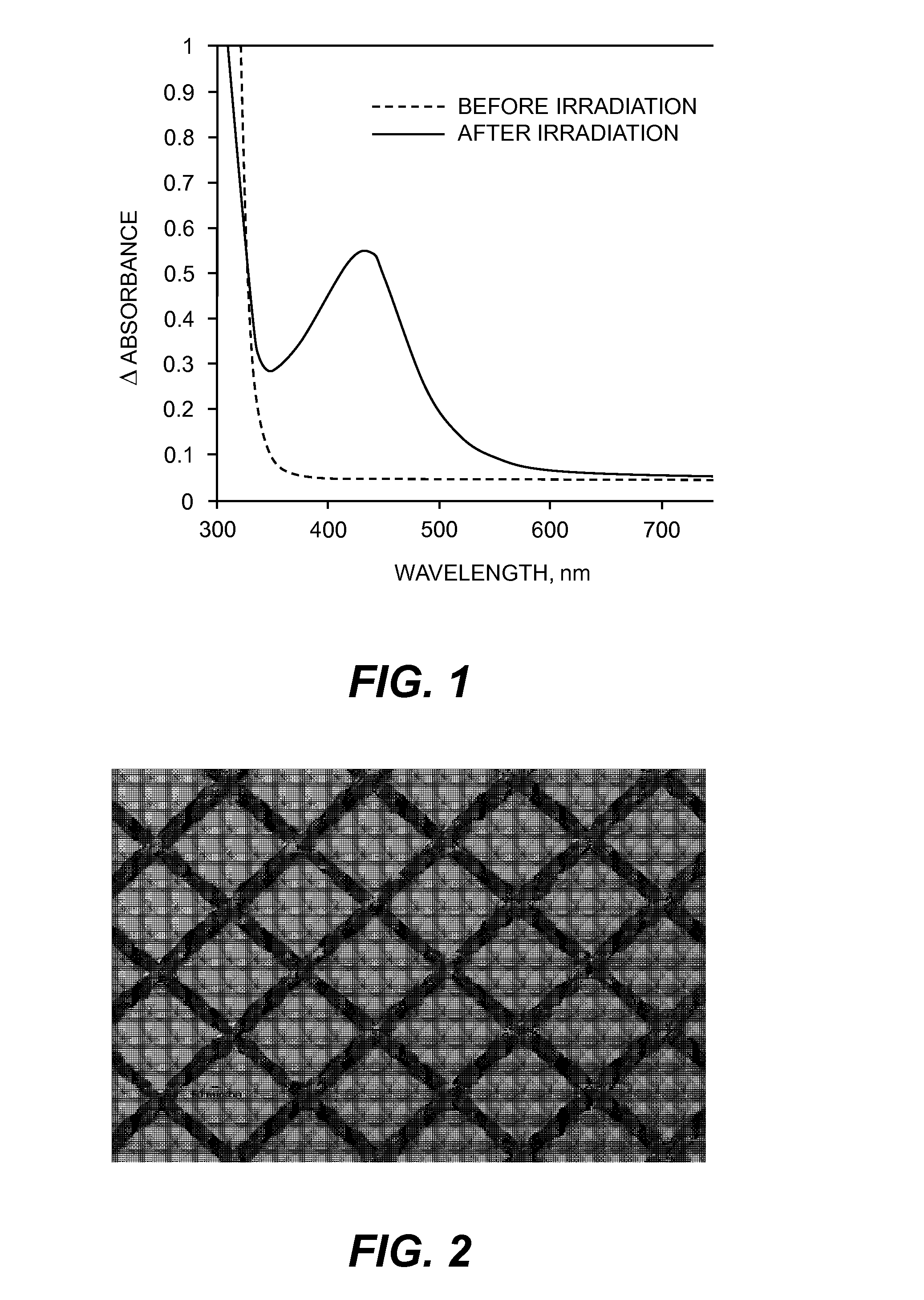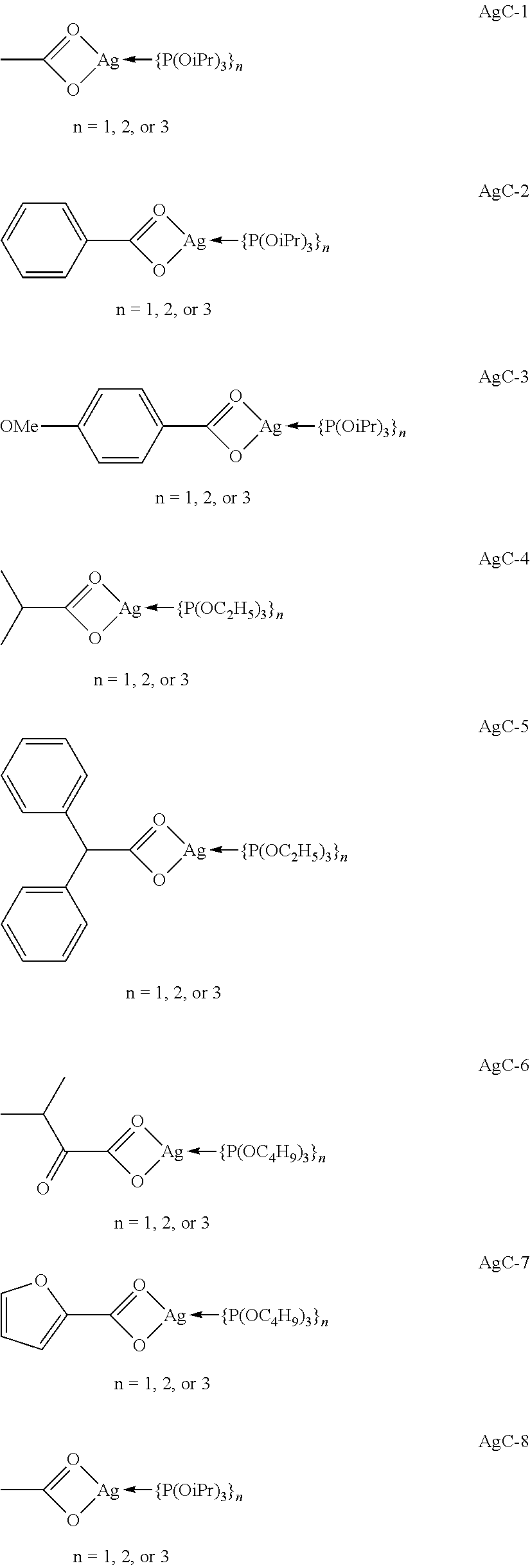Forming silver catalytic sites from silver phosphite carboxylates
a technology of silver phosphite and carboxylate, which is applied in the direction of organic compound/hydride/coordination complex catalyst, chemical coating, physical/chemical process catalyst, etc., can solve the problems of inability to bend or flex, inability to optimize the design of both precursors and processing procedures, and inability to produce electrically-conductive patterns. defects, the effect of reducing operator errors
- Summary
- Abstract
- Description
- Claims
- Application Information
AI Technical Summary
Benefits of technology
Problems solved by technology
Method used
Image
Examples
##ventive example 1
Inventive Example 1
Use of Non-Aqueous Metal Catalytic Composition Containing Silver Acetate-Tris-Isopropyl Phosphite Complex
[0278]Tri-isopropyl phosphite (1.01 g, 4.8 mmol) was added dropwise to a fine dispersion of silver acetate (0.8 g, 4.8 mmol) solution in 10 ml of methoxyisopropanol at 25° C. The resulting reaction mixture was stirred for 10 minutes to obtain a clear solution. The organic solvent was removed under reduced pressure, providing a pale yellow oil of the desired silver acetate-tri-isopropyl phosphite complex.
[0279]To a mixture of ethoxylated diacrylate (0.5 g, SR259 from Sartomer) and ethoxylated pentaerythritol tetraacrylate (0.167 g, SR 494 from Sartomer), photoinitiator and photoreducing composition 2-methyl-1-[4-(methylthio)phenyl]-2-(4-morpholinyl)-1-propanone (0.02 g, compound S9 identified above) was added and dissolved at room temperature by sonication in an ultrasound bath. To this mixture, silver acetate-triisopropyl phosphite complex prepared above in 0.4...
##ventive example 2
Inventive Example 2
[0282]Fine lines of nominal width 7-10 μm of the non-aqueous metal catalytic composition described in Invention Example 1 were printed on poly(ethylene terephthalate) film substrate to provide a precursor article. Printing of the fine lines was carried out using a flexographic IGT F1 printer and a flexographic printing member obtained from a commercially available Kodak Flexcel NX photopolymer plate. The applied pattern of non-aqueous metal catalytic composition was imaged through a mask that was written using the Kodak Square Spot laser technology at a resolution of 12,800 dpi. Exposure was carried out using with UV light using Fusion benchtop conveyor unit equipped with H-bulb. The nominal UV dose was between 50-100 mJ / cm2.
[0283]After UV exposure, the resulting intermediate article was immersed in an electroless copper plating bath solution, ENTHOSE® Enplate LDS CU-406 SC, at 45° C. for 15 minutes using conditions recommended by the commercial supplier. The resu...
PUM
| Property | Measurement | Unit |
|---|---|---|
| wavelength | aaaaa | aaaaa |
| wavelength | aaaaa | aaaaa |
| particle size | aaaaa | aaaaa |
Abstract
Description
Claims
Application Information
 Login to View More
Login to View More - R&D
- Intellectual Property
- Life Sciences
- Materials
- Tech Scout
- Unparalleled Data Quality
- Higher Quality Content
- 60% Fewer Hallucinations
Browse by: Latest US Patents, China's latest patents, Technical Efficacy Thesaurus, Application Domain, Technology Topic, Popular Technical Reports.
© 2025 PatSnap. All rights reserved.Legal|Privacy policy|Modern Slavery Act Transparency Statement|Sitemap|About US| Contact US: help@patsnap.com



